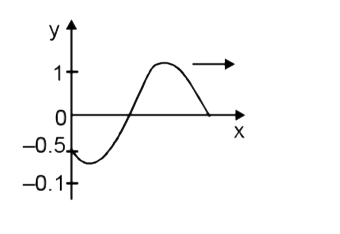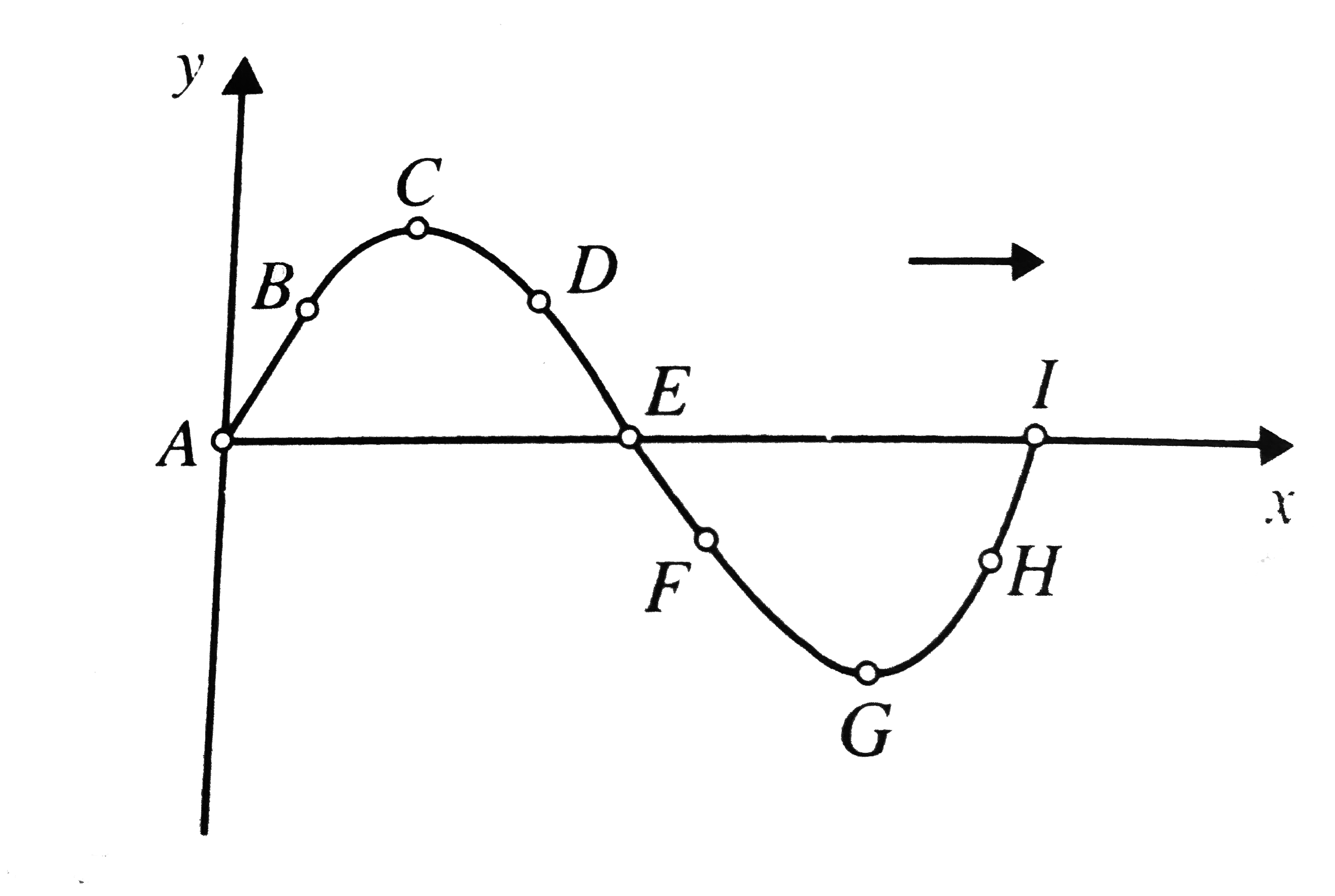Statement I : The transverse wave is traveling along a string in the positive x-axis is shown. Points (A & P1) moving downward and point (C &P2) moving upward.
Statement II : In a wave propagating in positive x direction, the points with +ve slope move downward and vice versa.

If both statement -I and Statement -II are true , and statement-II is the correct explanation of statement -I
If both statemenrt-I and Statement-II are true but statement-II is not the correct explanation of statement -I
If statement -I is true but statement -II is false.
If statement -I is true but statement -II is true
The correct Answer is:A
Step by step video, text & image solution for Statement I : The transverse wave is traveling along a string in the positive x-axis is shown. Points (A & P_1) moving downward and point (C &P_2) moving upward. Statement II : In a wave propagating in positive x direction, the points with +ve slope move downward and vice versa. by Physics experts to help you in doubts & scoring excellent marks in Class 11 exams.
Updated on:21/07/2023Topper's Solved these Questions
Similar Questions
The equation of a wave travelling along the positive x-axis, as shown in figure at t=0 is given by

View SolutionA transverse wave is travelling along a string in the positive x-axis. The

shows the photograph of the wave at an instant. Find
(a) the points moving upwards
(b) the points moving downwards
(c ) the points which have zero velocity
(d) the points which have maximum velocity
View Solution
Knowledge Check
A transverse wave travels along x-axis . The particles of medium move
AAlong x-axisBAlong y-axisCAlong z-axisDEither along y- axis or z-axisThe equation of a wave travelling along the positive x-axis, as shown in figure at t=0 is given by :-
_E01_059_Q01.png) .Asin(kx−ωt+π6)Bsin(kx−ωt−π6)Csin(ωt−kx+π6)Dsin(ωt−kx−π6)
.Asin(kx−ωt+π6)Bsin(kx−ωt−π6)Csin(ωt−kx+π6)Dsin(ωt−kx−π6)the equation of a wave travelling along the positive x - axis ,as shown in figure at t = 0 is given by
 Asin(kx−ωt+π6)Bsin(kx−ωt−π6)Csin(ωt−kx+π6)Dsin(ωt−kx−π6)
Asin(kx−ωt+π6)Bsin(kx−ωt−π6)Csin(ωt−kx+π6)Dsin(ωt−kx−π6)
A transverse wave travels along x-axis . The particles of medium move
View Solution
The figure shows a transverse wave travelling in a string in negative x-axis direction. Three points A, B and C are indicated on the string at the instant shown
The correct statement(s) is/are.
View SolutionA wave is travelling along a string. At an instant shape of the string is as shown in the enclosed figure. At this instant, point A is moving upwards. Which of the following statements are correct?

View SolutionAssertion : y−x graph of a transverse wave on a string is as shown in figure. At the given instant point P is moving downwards. Hence, we can say that wave is moving tiwards positive y−direction.<imga≤ocr_imageload∈g=lazysrc=https://d10lpgp6xz60nq.cloudfront.net/physics_images/DCP_V03_C17_E01_034_Q01.pngwh=80%mx-autosty≤=background:white;><br>Reason:Partialvelocityisgivenby<br>vp = -v(dely)/(delx)
View SolutionThe position of a transverse wave travelling in medium along positive x-axis is shown in figure at time t=0. Speed of wave is v=200 m/s
Frequency of the wave is

View Solution

